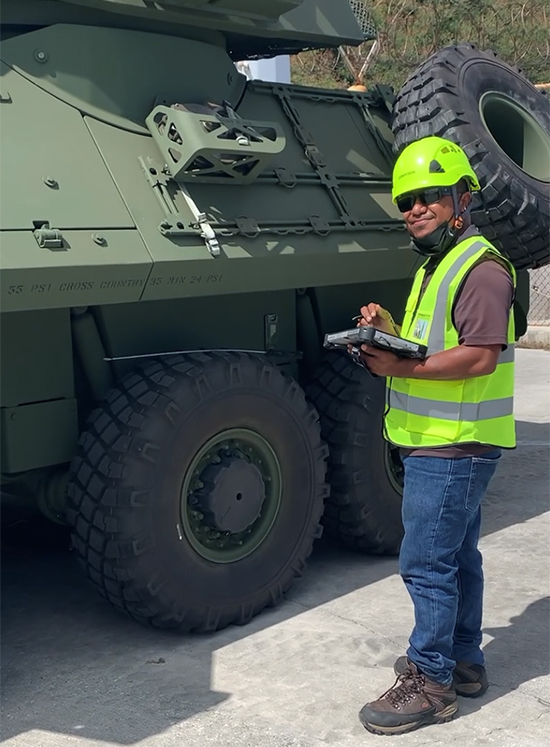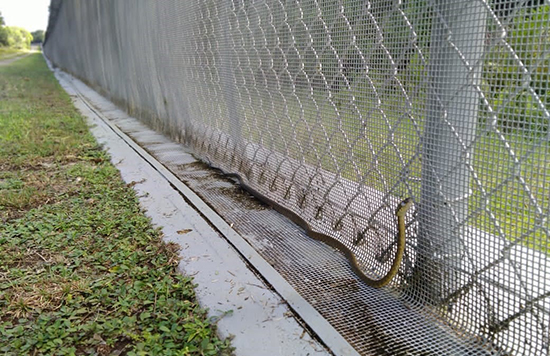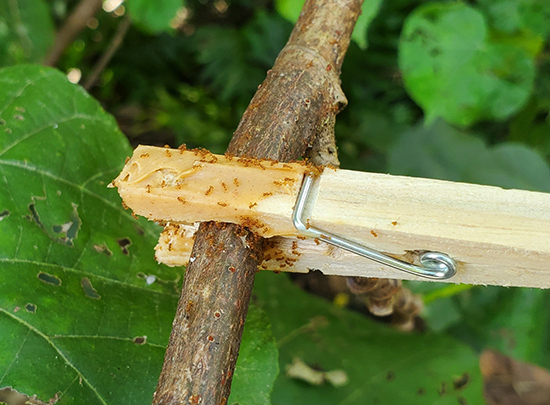BY JODI PETERSON

On a muggy morning in the U.S. territory of Guam, a distant island in the western Pacific, workers at Andersen Air Force Base (AAFB) are offloading military equipment from a C-130 Hercules aircraft. Humvees, generators, rations, cots, and more are destined for a location in the Commonwealth of the Northern Mariana Islands, where the U.S. Air Force is holding a training exercise. But first, each piece of cargo must clear a biosecurity inspection to ensure that no hitchhikers – plants, soil, seeds, frogs, spiders, moths, lizards, and the like – are along for the ride. And that’s where CSU’s Center for Environmental Management of Military Lands (CEMML) comes in, with its Navy-funded Guam Biosecurity Project.
Guam is already battling several destructive invasive species. The brown tree snake, originally from Manus Island near New Guinea, has eradicated most of the island’s native forest birds, and the coconut rhinoceros beetle (CRB), from southern Asia, is decimating the iconic coconut palm. The U.S. Navy and Joint Region Marianas (JRM) are dedicated to ensuring that no other damaging animal or plant species get a foothold on Guam or elsewhere in the Mariana Islands.
As part of the larger Guam Biosecurity Project, CEMML biosecurity inspectors examine each piece of cargo as it arrives. The inspectors are looking for stowaways, such as the red imported fire ant, an aggressive South American species harmful to people, livestock, and wildlife. They remove and catalogue all visible biomaterials to ensure incoming items meet Department of Defense (DoD) transportation cleanliness standards. “Our inspections are aimed at preventing any movement of species between islands,” says CEMML entomologist Ken Puliafico, who helps develop new methods for invasive insect control.

To help them find and remove these unwanted visitors, CEMML inspectors use headlamps, dental mirrors, small brushes, brooms, vacuum cleaners, and even an extendable back scratcher. “That’s one of our best tools,” says Puliafico. “You can reach in and grab something small, even bits of gravel or sand.” Bugs go into collecting jars, while soil and plant matter get bagged for identification and disposal. Last year, the team inspected nearly 2,100 pieces of cargo, and intercepted more than 6,800 pieces of biomaterial. In case a critter or plant somehow evades scrutiny and makes it onto Guam installations or another island through military activities, a rapid response team of CEMML biologists stands ready to implement eradication and/or control measures. In the team’s six-year existence, it hasn’t been called out yet, fortunately.

“Nonetheless, those biologists keep busy,” says Tom Mathies, principal investigator for CEMML’s Guam Biosecurity Project since 2018, describing how the biologists regularly conduct early detection surveys (EDS) for invasive species in and around cargo areas and military training locations on Guam installations and the neighboring island of Tinian where military activities take place. They also implement eradication and/or control measures for species already on Guam, such as another species of fire ant, the little fire ant from Central and South America. “Control and eradication are two different things,” says Mathies. “But we can at least extinguish localized outbreaks of little fire ants to keep them from spreading” into the DoD transportation network.
Promising new research to track invasive species is in its initial stages, led by the University of California, Berkeley, with support from Iowa State University and CEMML. One of the biggest hurdles in stopping new insect invaders is identifying them; traditional methods are time-consuming and it’s hard to determine quickly if a bug might be harmful. With next-generation DNA analysis, traces of insect genetic information can be extracted from material such as spider webs, wash water, leaves, and soil samples. This method can produce an extensive list of insect species within a short time. The project will also evaluate portable systems that process individual insects in the field. Using the resulting short segments of DNA, researchers can accurately identify insects and review information from global databases to decide if they’re likely to become a problem. “We have a backlog of bug samples just from Guam, thousands of specimens that need to be identified,” says Puliafico. “This will give us an exciting opportunity to find invasive species earlier.”
 A coconut rhinoceros beetle on Guam. The beetle, which grows up to 2.5 inches long, damages the developing fronds of coconut and oil palms; it also harms bananas, sugarcane, papayas, and pineapple. CREDIT: KEN PULIAFICO
A coconut rhinoceros beetle on Guam. The beetle, which grows up to 2.5 inches long, damages the developing fronds of coconut and oil palms; it also harms bananas, sugarcane, papayas, and pineapple. CREDIT: KEN PULIAFICO